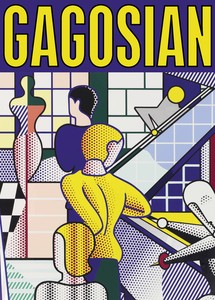
Now available
Gagosian Quarterly Summer 2024
The Summer 2024 issue of Gagosian Quarterly is now available, featuring a detail of Roy Lichtenstein’s Bauhaus Stairway Mural (1989) on the cover.
To mark the twentieth anniversary of Gagosian Beverly Hills on North Camden Drive, founder Larry Gagosian has selected a special exhibition of works by more than thirty artists spanning three generations.
Born in Los Angeles, Gagosian opened his first galleries on Almont Drive and Robertson Boulevard in the early 1980s. Chris Burden and Jean-Michel Basquiat were among the first artists to be exhibited. Drawing on the city’s abundance of talented artists, Gagosian was at the forefront of developing a bicoastal model for contemporary art galleries—the beginning of a global expansion that now numbers fifteen galleries in three continents—when he moved to New York in 1985 and opened his first gallery there, in collaboration with Leo Castelli.
Los Angeles provided both artists and galleries with an ideal infrastructure for creating and exhibiting diverse bodies of work, sometimes on a very large scale, and in 1995 Gagosian Beverly Hills, designed by acclaimed American architect Richard Meier, opened with new sculptures by Frank Stella. A major exhibition in homage to Castelli’s legendary gallery followed, which brought together works by artists including Jasper Johns, Ellsworth Kelly, Roy Lichtenstein, and Bruce Nauman. The program continued to evolve with a survey of Basquiat’s paintings and drawings (1998), Lichtenstein’s Nudes (1998), Andy Warhol’s iconic Camouflage Paintings (1999), and Alexander Calder’s Mobiles (2003), among many other exhibitions.
In 2010, the expansion of the Beverly Hills gallery into the next-door building to create a second light-filled space of equal scale—again designed by Meier—enabled even more ambitious programming, with major exhibitions by Urs Fischer, Andreas Gursky, Jeff Koons, Giuseppe Penone, Richard Prince, Ed Ruscha, Richard Serra, and Taryn Simon, among others. The career-spanning survey Avedon: Women (2013) was the first exhibition of Richard Avedon’s photography in Los Angeles since 1976.
At Gagosian’s much-anticipated “Oscar shows,” an annual fixture in the Los Angeles cultural calendar, the art, film, and celebrity communities rub shoulders prior to the Academy Awards ceremony. To date, these include Cindy Sherman’s photographic self-portraits (2000); Richard Prince’s Check Paintings (2005); Andreas Gursky’s Ocean photographs (2010); Ed Ruscha’s Psycho Spaghetti Western still-life landscape paintings (2011); Urs Fischer’s dramatic and droll sculptural installations (2012); and, most recently, John Currin’s oil paintings of perverse libertine fantasies (2015).
With Damien Hirst’s black-sheep vitrine (2009), Robert Therrien’s enigmatic No title (blue bow) (2015), and Nancy Rubins’s sculptural graphite Drawing (2015), as well as new works by Thomas Houseago, Sterling Ruby, and Rudolf Stingel, among the more than thirty participating artists, the twentieth-anniversary exhibition celebrates the gallery’s richly diverse international program in the city where it all began.

The Summer 2024 issue of Gagosian Quarterly is now available, featuring a detail of Roy Lichtenstein’s Bauhaus Stairway Mural (1989) on the cover.
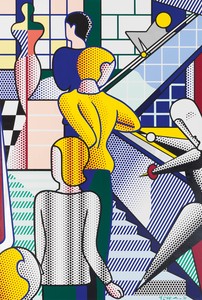
Alice Godwin and Alison McDonald explore the history of Roy Lichtenstein’s mural of 1989, contextualizing the work among the artist’s other mural projects and reaching back to its inspiration: the Bauhaus Stairway painting of 1932 by the German artist Oskar Schlemmer.
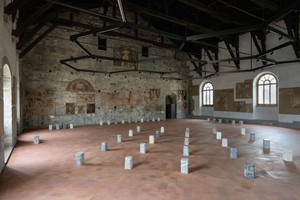
An installation by Rachel Whiteread in the Palazzo della Ragione, Bergamo, Italy, commissioned by Galleria d’Arte Moderna e Contemporanea di Bergamo and cocurated by Lorenzo Giusti and Sara Fumagalli, opened in June of 2023 and ran into the fall. Conceived in relation to the city, the architecture of the site, and the history of the region, it comprised sixty sculptures made with local types of stone. Fumagalli writes on the exhibition and architect Luca Cipelletti speaks with Whiteread.
In this video, Urs Fischer elaborates on the creative process behind his public installation Wave, at Place Vendôme, Paris.
In celebration of the centenary of Roy Lichtenstein’s birth, Irving Blum and Dorothy Lichtenstein sat down to discuss the artist’s life and legacy, and the exhibition Lichtenstein Remembered curated by Blum at Gagosian, New York.
Gagosian and the Art Students League of New York hosted a conversation on Roy Lichtenstein with Daniel Belasco, executive director of the Al Held Foundation, and Scott Rothkopf, senior deputy director and chief curator of the Whitney Museum of American Art, New York. Organized in celebration of the centenary of the artist’s birth and moderated by Alison McDonald, chief creative officer at Gagosian, the discussion highlights multiple perspectives on Lichtenstein’s decades-long career, during which he helped originate the Pop art movement. The talk coincides with Lichtenstein Remembered, curated by Irving Blum and on view at Gagosian, New York, through October 21.
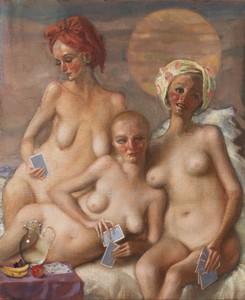
Writers and curators Dodie Kazanjian and Alison Gingeras spoke with the Quarterly’s Alison McDonald about the arts organization Art&Newport and the possibilities the historic Rhode Island town offers contemporary artists. Their current exhibition, Games, Gamblers & Cartomancers: The New Cardsharps, on view through October 1, 2023, examines the varied custom of card play and includes artists such as John Currin, Hadi Falapishi, and Katie Stout.
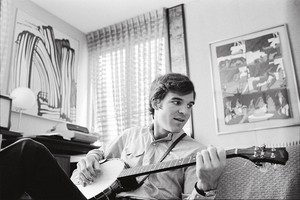
Actor and art collector Steve Martin reflects on the friendship and professional partnership between Roy Lichtenstein and art dealer Irving Blum.
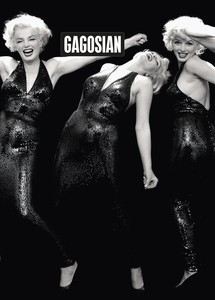
The Summer 2023 issue of Gagosian Quarterly is now available, featuring Richard Avedon’s Marilyn Monroe, actor, New York, May 6, 1957 on its cover.

The Spring 2023 issue of Gagosian Quarterly is now available, featuring Roe Ethridge’s Two Kittens with Yarn Ball (2017–22) on its cover.
In conjunction with his exhibitions Adam McEwen at Gagosian in London, and Adam McEwen: XXIII at Gagosian in Rome, the artist sits down with author Ian Penman to discuss his new obituary works and graphite sculptures.
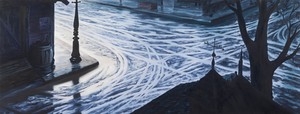
In this interview, curator and artist K.O. Nnamdie speaks with artist Dan Colen about his recent show in New York: Lover, Lover, Lover. Colen delves into the concept of “home” as it relates to his work, specifically the Mother and Woodworker series. Thinking through the political and historical implications of “homeland” in the context of the artist’s relationship with Israel and America, the two consider the intersections between these paintings—the final group of his Disney-inspired canvases—and Colen’s work with Sky High Farm, New York.
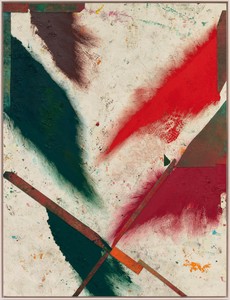
Ester Coen meditates on the dynamism of Sterling Ruby’s recent projects, tracing parallels between these works and the histories of Futurism, Constructivism, and the avant-garde.
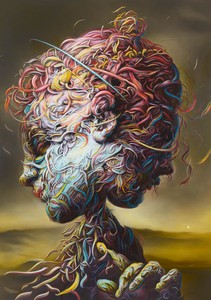
Novelist Andrew Winer reports on the formal, conceptual, historical, and philosophical perspectives embedded in Glenn Brown’s latest paintings and drawings. The two talked after the opening of the artist’s recent New York exhibition Glenn Brown: We’ll Keep On Dancing Till We Pay the Rent.
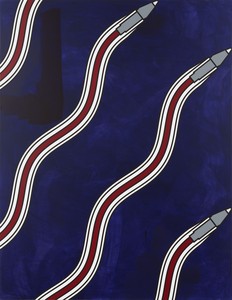
Contemporary artists Adam McEwen and Jeremy Deller met up online over the holiday season to discuss McEwen’s upcoming exhibitions in London and Rome. McEwen delves into the motivations and criteria behind his work, as well as the challenges and complexities of memorializing the living.
Join Sterling Ruby in his Los Angeles studio as he works on new abstract paintings ahead of his exhibition TURBINES at Gagosian in New York.
In conjunction with his exhibition Glenn Brown: We’ll Keep On Dancing Till We Pay the Rent at Gagosian in New York, the artist sits down to discuss his new paintings, sculptures, and drawings.
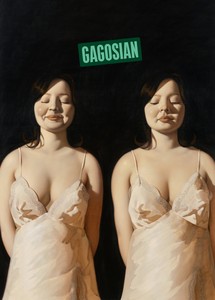
The Winter 2022 issue of Gagosian Quarterly is now available, featuring Anna Weyant’s Two Eileens (2022) on its cover.
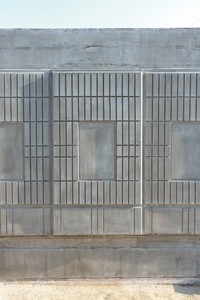
On the occasion of the unveiling of her latest Shy Sculpture, in Kunisaki, Japan, Rachel Whiteread joined curator and art historian Fumio Nanjo for a conversation about this ongoing series.They address the origins of these sculptures and the details of each project.
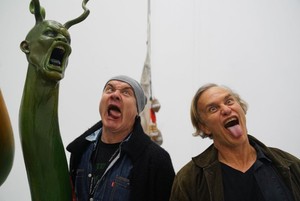
In conversation with James Fox, Damien Hirst reflects on the artwork of his longtime friend.